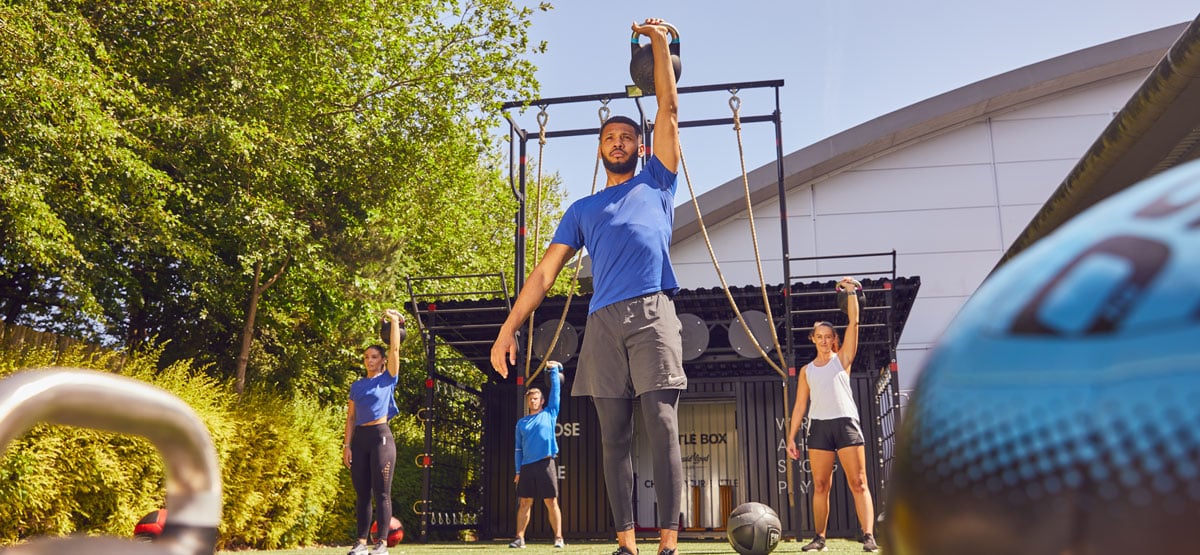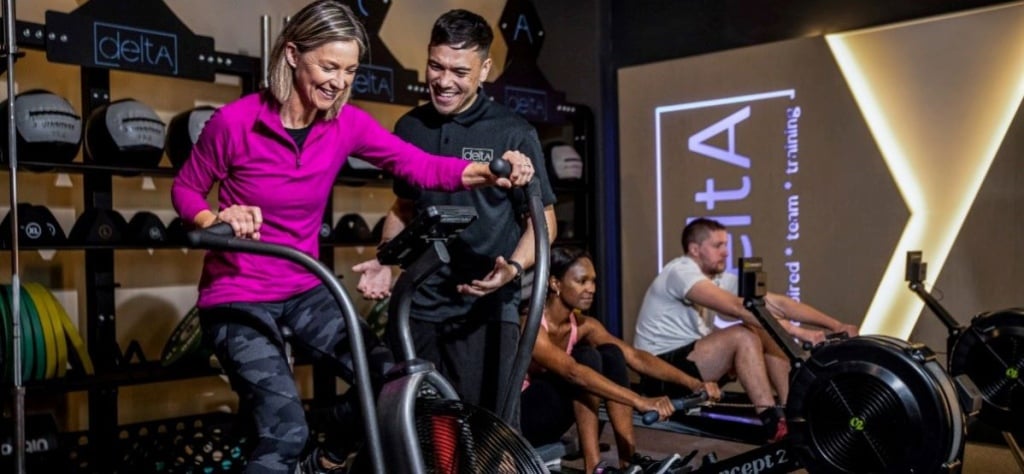There are occasions in life where we all need to put some thought into the most appropriate outfit to wear. A formal wedding, for example, or an important job interview. Surely, by comparison, deciding what to wear to the gym should be simple? After all, you’ll be hitting the treadmill, not the catwalk.
Yes and no.
We’re certainly not suggesting that you curate a fashion-editor-approved workout wardrobe of the latest looks (unless, of course, that’s your thing!). But putting some thought into what to wear to the gym can actually boost your performance – as well as your confidence.
We’ll explain what you need to consider when it comes to the workout gear you’ll pack in your gym bag, from the best fabrics to the fitted versus loose debate. Get ready to dress for success.
Invest time in your gym shoe research – it’ll pay off
Footwear choice can make all the difference to your session, whether you’re just getting started in the gym or are an experienced gym-goer. The right shoes can help for all kinds of exercise – if you need a stable base for lifting weights, or something to support your ankles in a cardio session. And it’s very much an individual matter. One person’s blissfully cushioned trainer is another person’s toe-crushing nightmare. By all means, listen to recommendations and read reviews, but nothing beats actually trying them on and testing them out.
Think about the activities you most often do at the gym. There are decent all-rounder gym shoes available, but you can also get more specialised trainers that particularly suit certain workouts. For example, if you’re really into HIIT, you should look for light, flexible trainers with shock-absorbing cushioning.
Cotton is not (necessarily) your friend

We’ve all been there – finding that scrunched-up old t-shirt at the back of a drawer and pulling it on for a workout. The problems start when you get sweaty. That’s because cotton is very absorbent. The more you sweat, the heavier and damper any cotton workout gear will become.
The best workout gear doesn’t make itself known to you – as in, you should almost be able to forget you’re wearing it and focus on exercising. A damp, increasingly weighty t-shirt will very much make itself known to you.
That being said, if you’re doing a super-low-impact class or gym session where you’re unlikely to sweat much, cotton’s a decent enough choice. For anything other type of exercise, you’re looking for sweat-wicking and/or breathable fabrics, such as:
- Nylon
- Polyester
- Merino wool blend (particularly for exercising outdoors)
- Bamboo
Don’t forget your underwear…
It’s tempting to just wear your everyday underwear beneath your gym kit – and for some people, that’ll work. However, you may find that pants that are ordinarily perfectly comfy can cause chafing and irritation when you’re working out. If that’s you, consider underwear that’s specifically designed for exercise.
For women, sports bras can help stave off future back pain, and ligament and tissue damage – and that’s not just when it comes to cardio. Wearing a sports bra for low-impact exercises such as yoga can have the same benefits.
… including your socks
Again, going for an everyday pair is unlikely to harm you. But it’s worth considering gym-specific training socks in order to avoid blisters and to allow your feet to breathe even during the sweatiest of workouts. If you’re planning a cardio-heavy session, some cushioning can go a long way.
Baggy or fitted?

This (mainly) comes down to individual preference. As we’ve alluded to, the best workout outfits will boost your confidence. If the idea of wearing fitted clothes to the gym fills you with horror, stick with looser styles.
Saying that, try not to go too loose. You don’t want to get your gym clothes tangled in a machine you’re using, and the baggier your workout outfit, the harder it is to monitor your movements.
There’s research to suggest that wearing tighter clothing for exercise is actually more comfortable, due to the effects of compression, so long as you choose sweat-wicking fabrics. Just don’t go so tight that it affects your range of movement.
Think storage
What are you likely to be carrying during your gym session? Phone, locker key, debit card – they need to go somewhere. With that in mind, when you’re considering what to wear to the gym, look at leggings or shorts with pockets.
Layer up

Having an outer layer, such as a hoodie or lightweight sports jacket, can make your gym experience much more pleasant. You can slip it off as you start getting sweaty, then pull it back on to avoid the post-workout chills as sweat starts to evaporate from your skin.
Add any accessories
Just as the perfect earrings or a judiciously chosen tie can really finish an outfit, so the right wearable fitness accessories can enhance your gym experience. We’re talking practically rather than aesthetically – wearable trackers such as heart rate monitors, running belts or armbands to hold your phone as you listen to music, weightlifting gloves, running headbands, and the like.
Once you’re done, put a wash on
If your gym session involves getting sweaty, you should wash your workout gear afterwards. Yes, it’s sorely tempting to just let it dry out and pop it back on for your next visit. No, you still shouldn’t do that – bacteria thrive in damp conditions, and repeatedly wearing unwashed workout gear can have a negative impact on your skin, as well as on the olfactory systems of those working out around you.
Once you’ve got the right gym gear, make sure you’ve got the right nutrition with our guide to what to eat before a morning gym session.
Find a club



